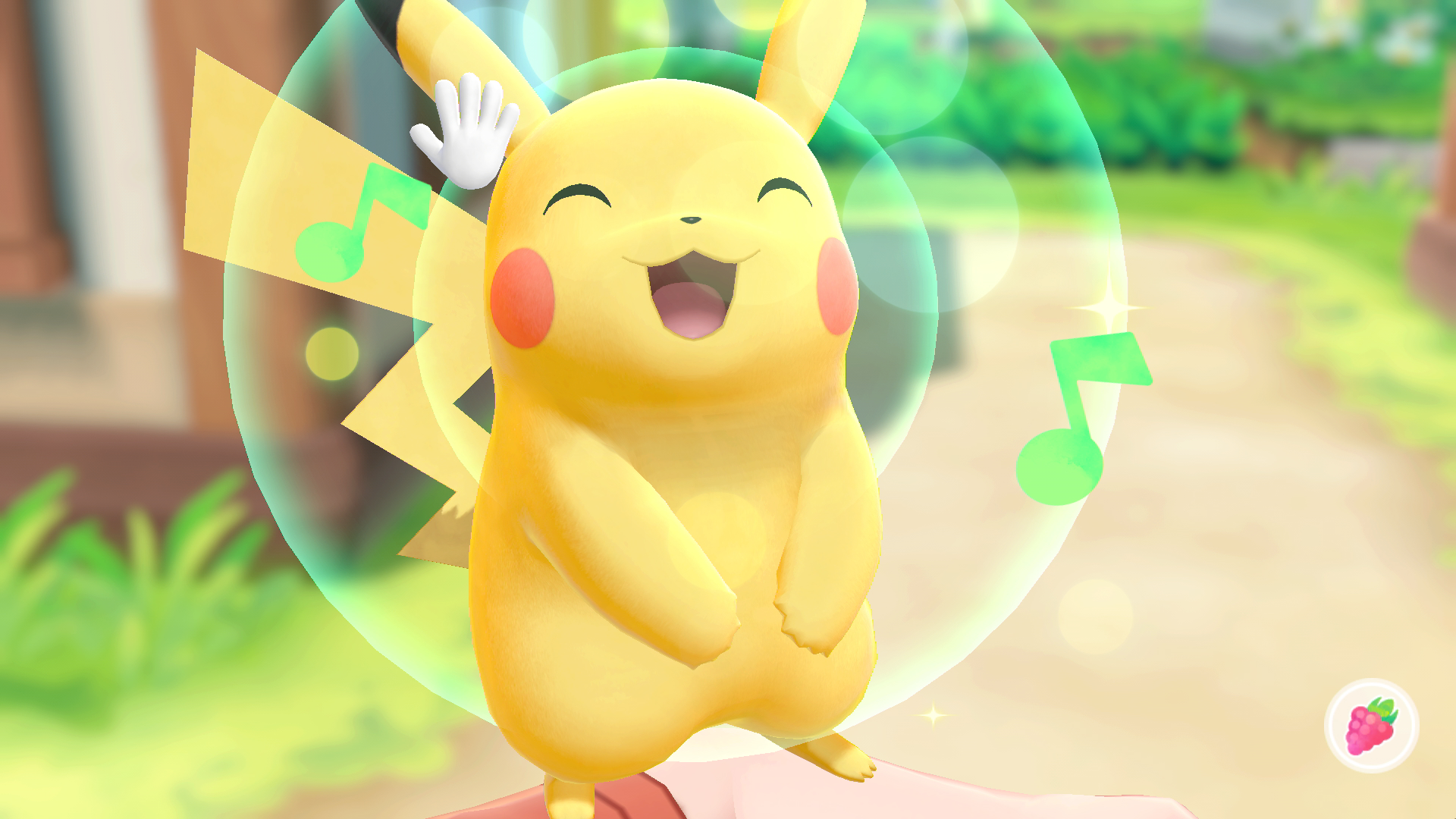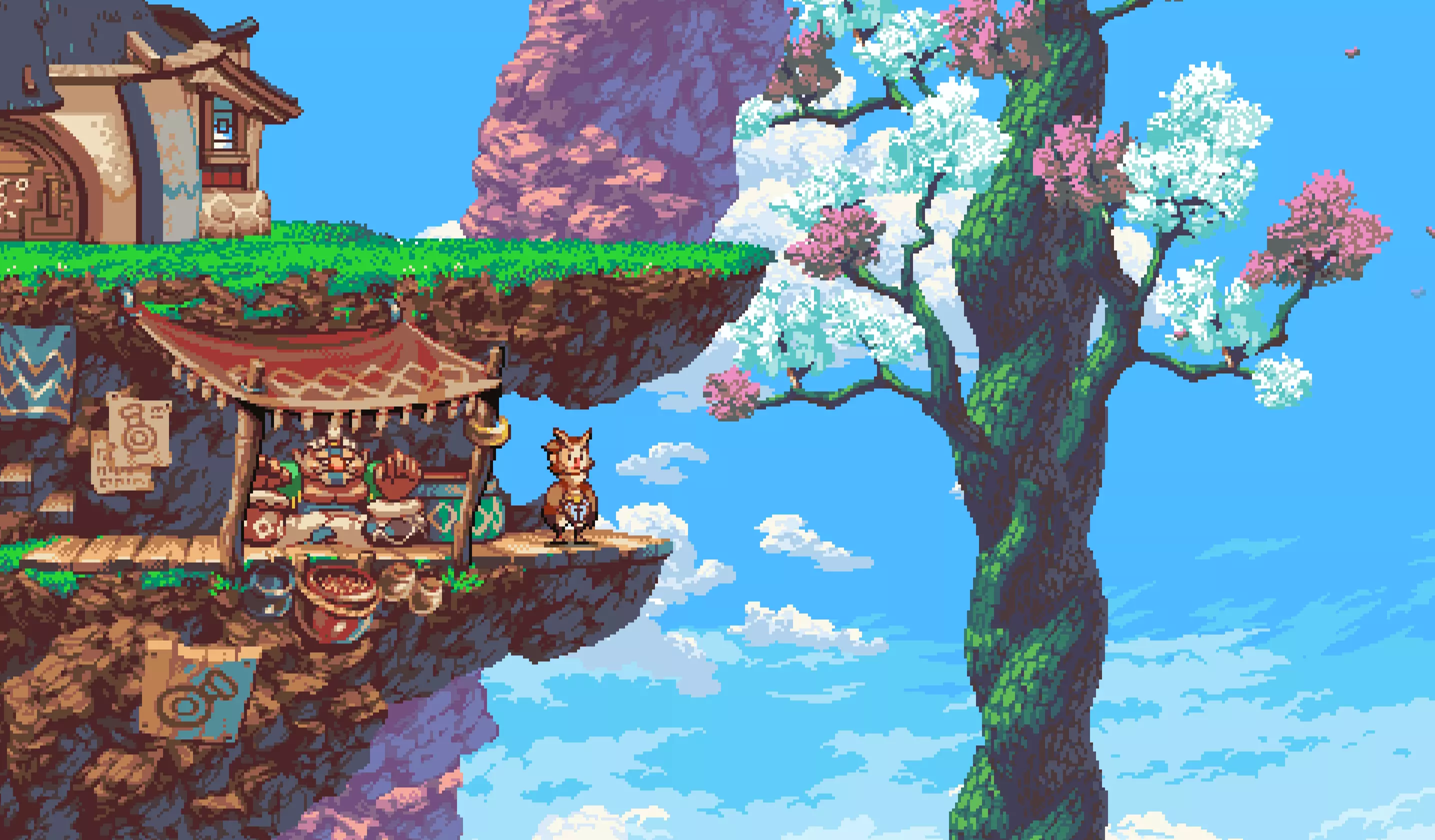The very best?
I hadn’t considered that by the end of 2018 I’d have played through the events of Game Freak’s original Pokémon games twice in one year. Yet, thanks to an impulsive playthrough of Pokémon Yellow on 3DS, and then this unexpected, modern retelling in the form of Pokémon Let’s Go Pikachu and Let’s Go Eevee, that became a weird, fun reality. A reality that gave me an interesting perspective of past and present, despite my lack of nostalgia for the series.
To add context to that last statement: I came into the whole Pokémon thing incredibly late, just missing the original schoolyard craze by a few years. It wasn’t until I bought a 3DS that I got around to trying a Pokémon game (White, if you’re interested) and only this year that I even completed one (Yellow). It’s been a slow-burn of catch-up since, but one that’s ignited a swelling passion for the series, and even culminated in a tattoo of the objectively best Pokémon, Dedenne. Don’t @ me.
Pokémon Let’s Go then, is a curious experiment by Game Freak, as it’s neither spin-off nor core entry, but is also kinda both. It streamlines a lot of the newer Pokémon processes, making them simpler and more approachable, even borrowing elements from Pokémon GO. While that does result in a more casual experience, it’s a very good time regardless.
The very best?
As a remake of the original games–Pokémon Yellow specifically–Let’s Go closely follows the cues of its source material, as you play a self-insert youngster in a Pokémon-obsessed world, sent to travel the land to become a Pokémon master. You achieve this by capturing the world’s creatures to complete your Pokédex–the series bestiary–and by training them in battles against the Pokémon of other trainers and gym leaders, until you’re strong enough to tackle the league.
None of that will be news to lifelong fans of the series, who are in for an enjoyable nostalgia trip as Let’s Go follows Yellow’s plot almost to the letter, taking you through the exact same path through Kanto, triggering the same events, only this time with much clearer direction and better context to the major plot points. Thanks to just a few months separating my playthroughs of original and remake, I marvelled at how I was never left wondering what my next move should be in Let’s Go, which wasn’t my experience with Yellow at all, where some gentle nudging would have been super-appreciated, especially when required to deliver story-reliant items to NPCs to progress.

The elevator pitch of Pokémon has always seen reductive jokes made around its position as a child-friendly legitimising of cruel and illegal betting “sports” like cock or dog fighting, and you can see why as its wildlife is forced to fight for the benefit of their captors. Thankfully, this element has long since been contextualised in mostly wholesome ways. In both later entries and the anime (a guilty pleasure of mine), it’s made abundantly clear that humans and Pokémon live symbiotically, and that your journey as a trainer is one of friendship. By training and travelling with your Pokémon, you form lasting bonds that inspire them to fight for you, while the bad guys–Team Rocket in Yellow and Let’s Go–are always shady corporations that see Pokémon as weapons or tools to be used for gain.
Pokémon Let’s Go, then, allows Game Freak to retcon this adorable framing onto the events of the original story, and they use your buddy Pokémon to convey that brilliantly.
They choose you!
With that, you don’t get to pick your starter as you usually do (with Yellow the only other series anomaly in this way) as either a wild Pikachu or Eevee–depending on which version you bought–seeks you specifically to be their trainer in the opening moments. As the stars of this iteration, they become central to both your battle party and the ways you interact with the world.
They’re your best friend! Your best bud! It’s just like in the anime, where they’re always with your character whether used or not. They’ll call for your attention to let you know how they feel, they’ll find gifts for you, and you can reward them with pats or berries. In battle, they’ll find that little extra strength when the chips are down, simply because they want to do well for you. I’m not usually a sucker for cutesy things, but even I found this all so freaking adorable that I couldn’t help but love it.

The buddies are also useful for navigating around the world, saving you from wasting valuable move slots on attacks like Cut, Push or Fly, learned from TMs in all entries up until Sun and Moon (which had its own user-friendly solution). All these abilities doubled as keys to open up previously inaccessible areas, quickly move around the map and solve puzzles. It’s your buddy that learns the equivalents during the story in Let’s Go, in addition to their own move set.
They’re not the only creatures that run around in the world with you, because not only can you release any Pokémon from its ball, but indeed all wild Pokémon run around the world too. You’re no longer assaulted in random battles in the long grass, but rather wild creatures spawn in their natural habitats and it’s up to you to run into them to trigger the catch mechanic. This is my favourite thing about Let’s Go, and the one thing I hope they carry into future entries. It not only makes wild encounters entirely optional (meaning that traversing caves is not the soul-destroying chore I found in Yellow), but also makes the Kanto region feel richer and more alive than any of the mainline games I’ve played.
Catch ‘em all
Let’s Go’s catching method changes dramatically between docked and handheld play, but both incorporate motion control in some way. This is sure to be a disappointment–and even a deal breaker–for some, especially for those with disabilities who have enjoyed other entries with traditional controls which is, to be blunt, shit on Game Freak’s part.
As you probably know by now, Let’s Go lifts–but is not an exact copy of–the catching mechanic from Niantic’s popular mobile game, Pokémon GO. The basics are the same: You don’t need to battle wild Pokémon to catch them (which never really made much sense against the series’ themes, anyway) and you must instead land the ball within a contracting, coloured circle to increase your chances of success. When playing docked, this is done using either a single Joycon or the Poké Ball Plus to make a throwing motion towards your TV or, when in handheld, using the gyroscope to aim a reticule and pressing the A button to release the ball.
Bizarrely, the Pro Controller is not supported at all, meaning that even if you prefer the handheld-style controls, you can’t replicate it when playing at your TV even though the best pad ever made is technically capable. This is super-disappointing, especially when there’s no valid reason for it, and feeds back into the accessibility concerns I mentioned earlier. They could have added the new methods in addition to the traditional and still made them the default, but instead they’ve alienated those that turn their noses up at motion control regardless of how well it’s integrated and, worse, left other would-be players at the door for not being physically capable. I hope they fix this in patches.
But here’s the thing, I can completely understand this putting people off as I too, broadly speaking, tend to dislike motion controls (this isn’t a hard and fast rule, I came around on Super Mario Odyssey’s controls quickly). I had fully expected to simply test out the physical throwing mechanics a few times before playing most of Let’s Go in handheld, but you know what? The motion controls work better than they have any right to.
The act of the throw itself is more about timing of the motion rather than the precision of it, even when accounting for a creature’s movement or position on the screen, and the audio-visual feedback is surprisingly satisfying. For me, this aspect was exponentially improved with the Poké Ball Plus controller, which uses HD rumble–a feature I usually leave off when playing my Switch–to wonderfully indicate the three stages of the catch process, while its internal speaker allows a caught creature to announce its presence.
I know this sounds like a minor, gimmicky thing–and it is, really–but it was another pleasing, sensory dimension to an already-pleasant experience, and once I’d used the Poké Ball Plus, switching to the Joycon while it charged just never felt quite as enjoyable. The other unexpected upside for docked play is you can play Let’s Go entirely one-handed, and I found that oddly freeing and relaxing, and it’s something I’d love to see more developers do more of where control schemes allow. Honestly, give it a shot even if you’re still sceptical, it might just surprise you.
The handheld catch controls are decently implemented too, though, thanks to the big adjustments possible with the analog stick, which leaves any physical motions limited to fine tuning. I found this better-suited to grinding levels or increasing my chances of encountering rare or shiny Pokémon through catch combos.
Catch combos are a simple but important mechanic, and smartly keep catching as a lucrative action regardless of what you’ve already caught. Repeatedly catch the same type of Pokémon without breaking the chain, and the more XP, bonuses and items you’ll get with each increment, and the better your chances of encountering rarer-spawning creatures. Without wild battles, I found the pace of levelling to be way less of a slog than some of the other entries, while still providing decent reward for putting the grind in.
And if you like the traditional battle system, then you’re still catered for too, as trainer and gym battles remain completely unchanged from other entries. Any NPC that locks eyes on you between towns will still challenge you to a Pokémon battle, where you fight in turn-based, menu driven fights with only one, seldom available, optional motion-controlled ability that your buddy can use if you want to.

Verdict
Thanks to a bright visual upgrade and some system modernisations that, if I’m being honest, I wouldn’t be disappointed to see carried over into next year’s promised ‘proper’ new entry, Pokémon Let’s Go brings the basic blueprint of the core series into high definition and does so splendidly.
Though, while I enjoyed the motion controls way more than I thought I would, and believe they should still exist moving forward, I hope we see a more inclusive approach that puts the choice back in the player’s hands.
Let’s Go may not be the objectively best game in the series or even my favourite, but it’s easily the most pleasant, acting as a positive indicator as to the core series’ future on the Switch.




